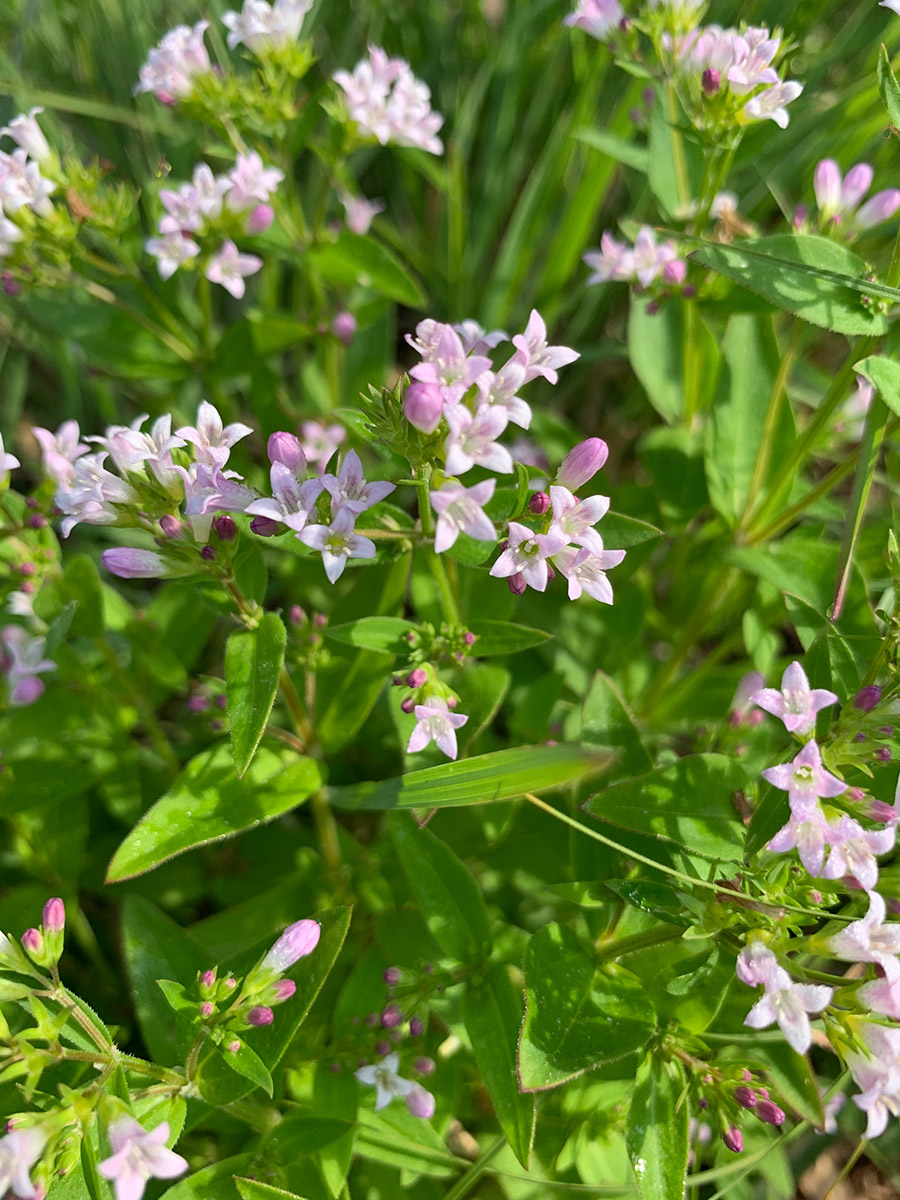I really really really really really wanted these to be wild blueberries. I grew up hiking and collecting wild blueberries both in Dolly Sods, WV, and Cape Cod, MA, and they really can’t be beat. Alas, they are not blueberries. They are the less palatable deerberry (which you may not want to eat at all frankly). You know who in the wild eats it? I bet you do. Birds!
Okay okay, deer too.
I mean, humans can eat these too, and have used them in pies and preserves in the past, however the “taste has been described as tart, sour, bitter, or “sweet-spicy tasting, a little reminiscent of lady’s perfume”. Hm.
SO… how do you tell a deerberry from a blueberry from a huckleberry? Oh my! Yes how?
It’s complicated. At a certain point I was slicing the berries in half to observe the seed pattern. However the flowers tend to be a dead give away (Deerberry flowers are very open shaped with a large yellow stamen/style protruding like a bell clapper). This was a few years ago, and as I was researching to write up this post, I see in the last year some lovely person on the website “Wild Plant Culture” posted a great blog posts called “Telling apart the blueberry-like shrubs”. I wish that had been written when I was first trying to figure this out! It’s a great post, with good photos and descriptions, so if you’re curious I encourage you to check it out here.
Alternate Names: Highbush Huckleberry Size: 6-12' tall Family: Ericaceae (Heath Family) Habitat: Dry, open woods; floodplain thickets with acidic soil. Identification: "Multiple twisted trunks covered in peeling reddish bark and is highly branched, tapering into thin twigs, some just a millimeter wide. It is deciduous, with alternately arranged leaves. The thin leaf blades are yellow-green, sometimes hairy or waxy in texture, especially on the undersides, and oval in shape with pointed tips and smooth edges. They are up to 2.8 inches long by 1 inch wide. The flowers are borne in hanging inflorescences from the leaf axils. Each flower has five green sepals and a bell-shaped corolla of five fused white petals about 0.2 inches long. The long, yellow stamens protrude, bearing long, tubular anthers. The style is longer than the stamens. The fruit is a spherical berry about a centimeter wide. It is greenish or yellowish, often with a purple tinge" From wikipedia.com Blooms May-June











